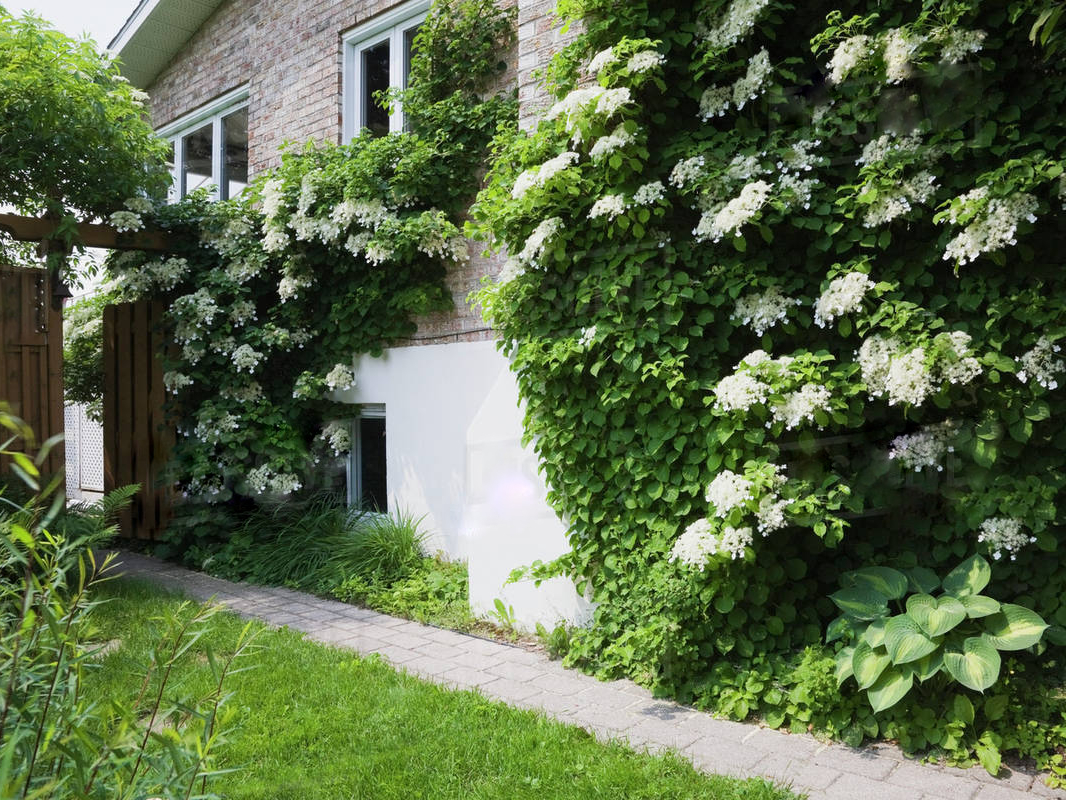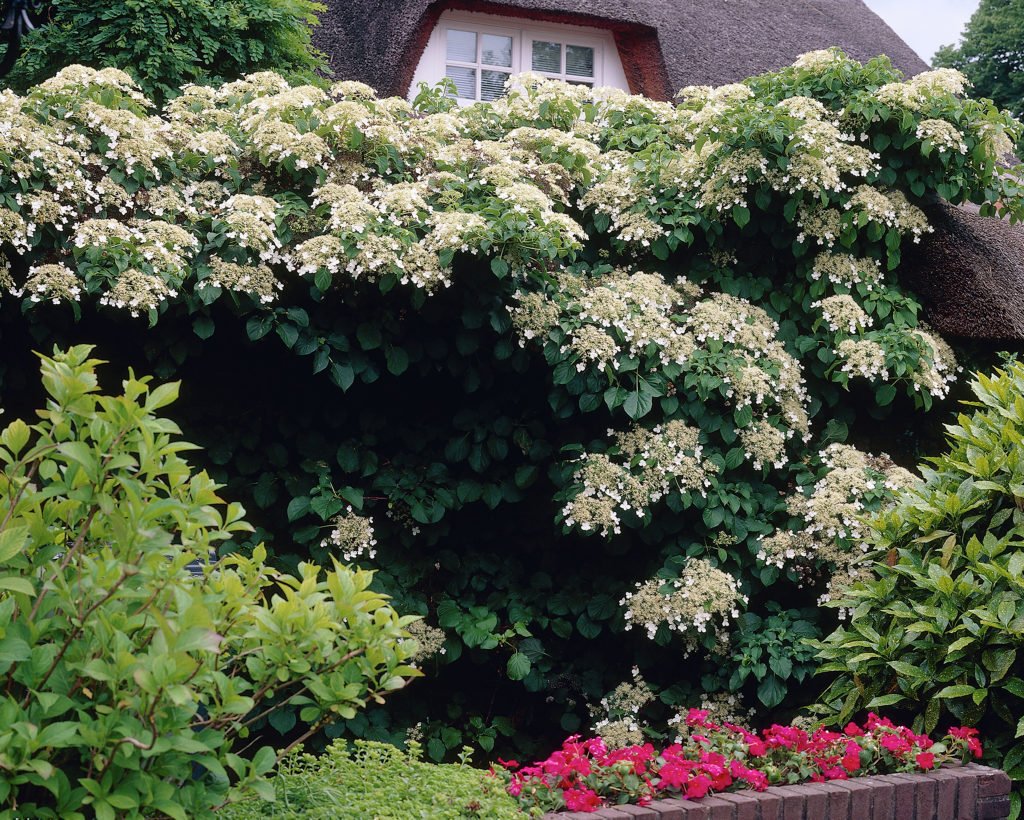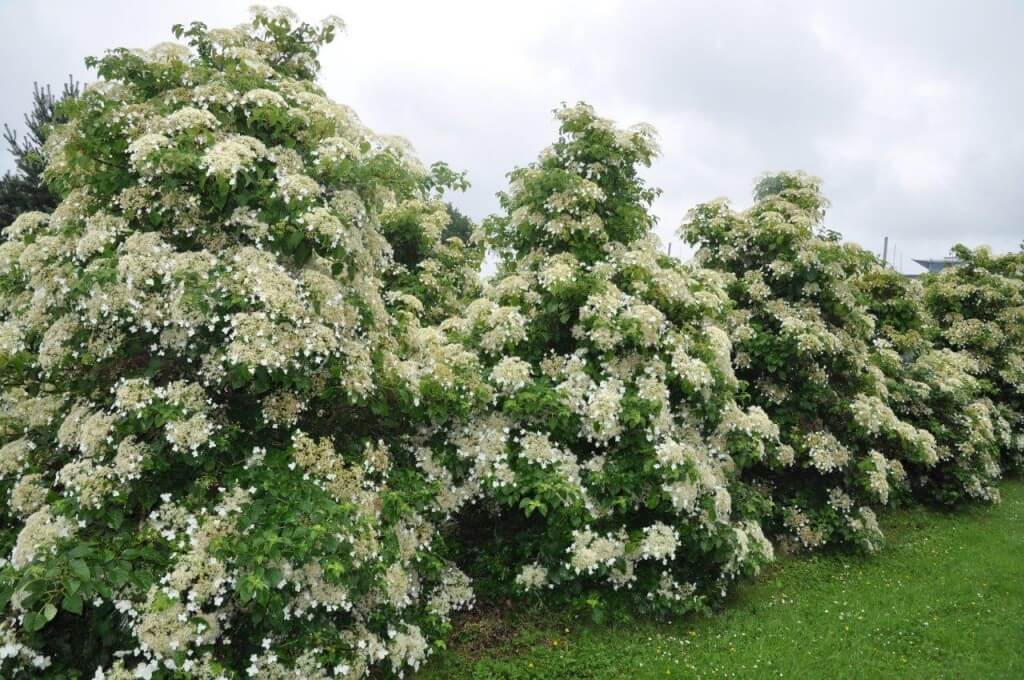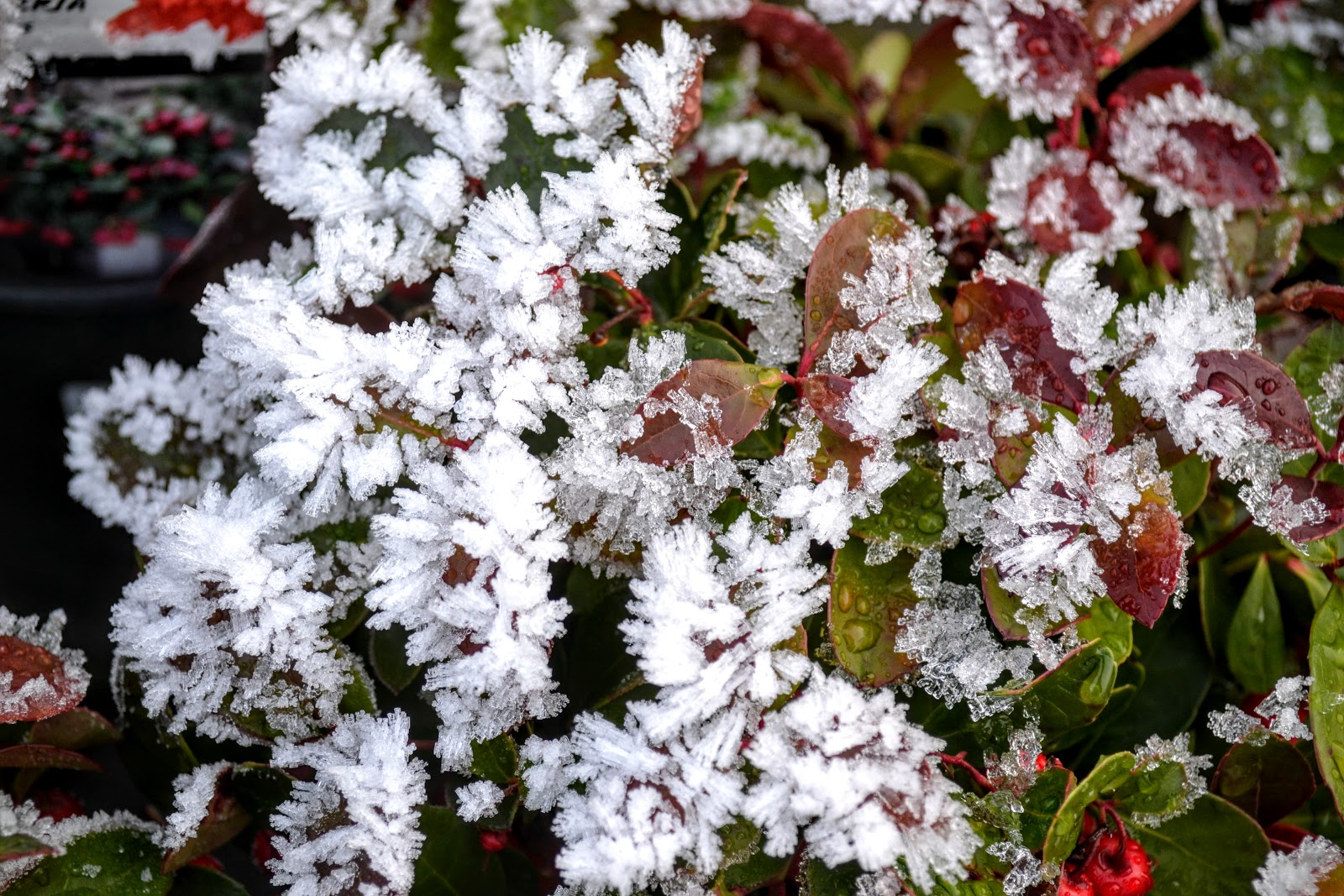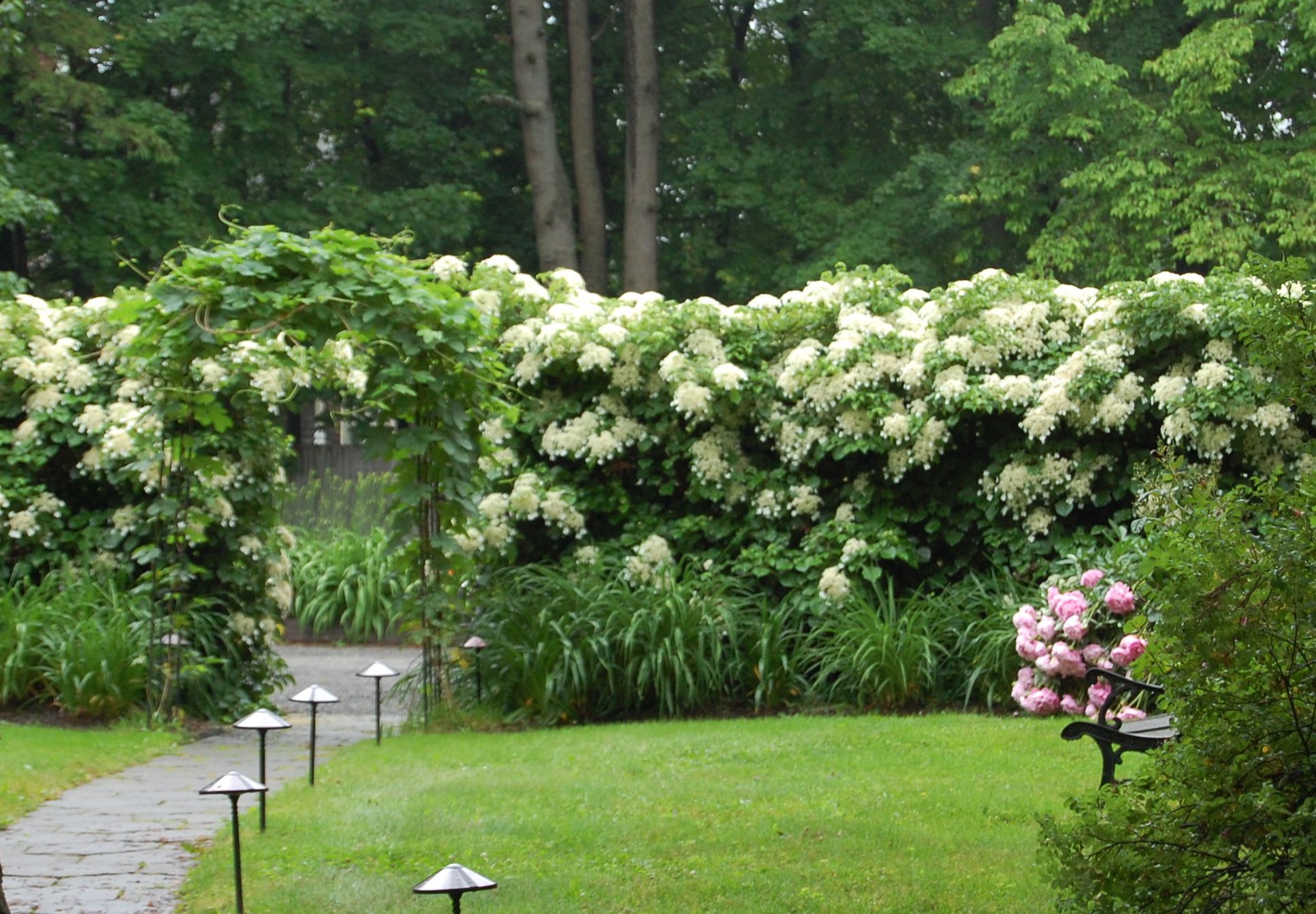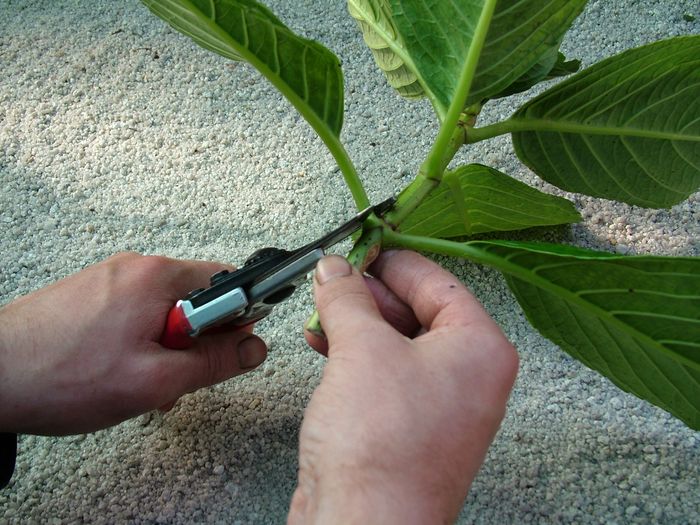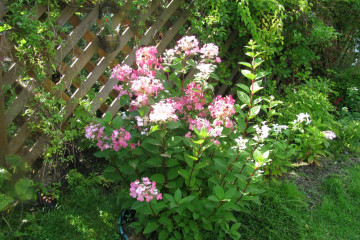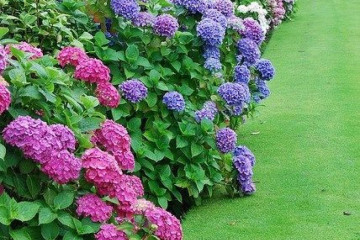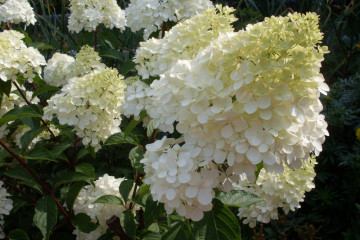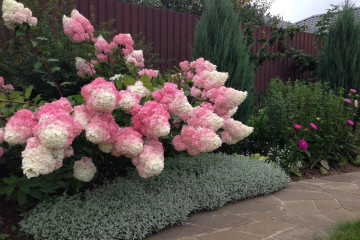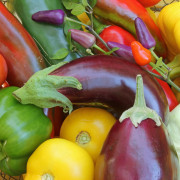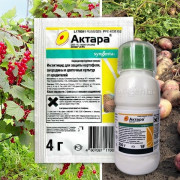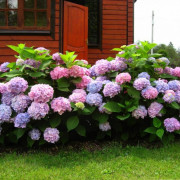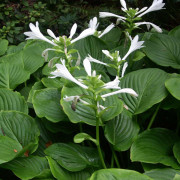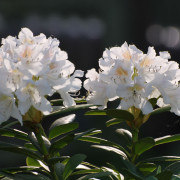Hydrangea petiolate or climbing, climbing liana
Content:
Stalked hydrangea is a weaving type of shrub, often used to decorate arches, building walls, front entrances or pergolas. The plant has not only decorative flowers, but also leaves. The aroma of the inflorescences is very similar to the smell of honey. Hydrangea is unpretentious and grows even in the most severe and unfavorable conditions. It is not difficult to take care of her, even a beginner will cope with the task. It is only important to learn the basic rules of agricultural technology and try to strictly follow them.
As soon as gardeners name a long-loved flower. Each locality has its own name for the curly hydrangea. It has a long history of origin and a fairly wide distribution area.
The origin and appearance of hydrangea
In natural conditions, petiolate hydrangea is found in the sparse coniferous and deciduous forests of Japan, Korea and Sakhalin, located near the sea. It has been cultivated as a cultivated garden plant since 1865.
The leaf plates of this shrub are large, dark green, with a pointed base. With the onset of autumn, they become yellow, and closer to November they completely fall off. Climbing hydrangea takes any shape, envelops objects. Moreover, she lacks a branched trunk. Landscapers use this feature effectively, and also combine the flower with other plants on the site. The dense foliage of the hydrangea is able to create shade for the windows of the house, protecting them from the summer heat.
The flowers are white, pale pink or pale purple in color. They are collected in thyroid inflorescences with a diameter of about 20 cm. Due to the strong aroma, the plant attracts bees and is considered a honey plant. The flowering period lasts more than 2 months and begins in mid-June.
Popular species and varieties
Despite the fact that the climbing hydrangea has been known to gardeners for a long time, there are not many varieties of it. Nevertheless, some breeders continue to work on the development of new interesting varieties and hybrids, replenishing their collections with beautiful flowers. Some of them have already fallen in love with flower growers.
Petiolaris
This variety is most loved by landscape designers, since it is a pleasure to work with it. It provides an opportunity to translate the most daring ideas into reality. Liana grows to a height of 25 meters, gracefully spreads on the ground or braids trees.
Cordifolia
This hydrangea variety is dwarf. The height of an adult plant does not exceed 1.5 m. A distinctive feature is that on the lower side the leaf plate has a white-green color. The inflorescences have a delicate creamy color.
Miranda
The variety is distinguished by a heart-shaped leaf plate, the edges of which are colored yellow. Even outside the flowering period, the bush looks decorative and is able to decorate any part of the territory with itself. With the help of adventitious roots, hydrangea climbs walls and fences, but such an attachment is very weak. It is recommended to install a net for vertical weaving.
Take e Chance
The description of the variety says that it differs from its counterparts with a white edging along the edge of the leaf. It happens that the entire leaf plate acquires a whitish color, which gives the shrub additional decorative qualities. The plant looks spectacular on the site even during the period when there are no flowers on it.
Winter Surprise
Hydrangea belongs to undersized varieties. The height of an adult bush does not exceed 2 m. The flowers are snow-white, the leaves are often green, but depending on the growing conditions, they acquire a red or cherry hue.
Silver Lining
This variety is characterized by a delicate delicate aroma, decorative inflorescences and lush leaves with a beautiful white edging. The maximum height of an adult shrub reaches 7 m. It is well formed, thanks to which the shrub can be given various attractive shapes. Also, this hydrangea is grown as a ground cover species. She is able to curl around grates and supports. The flower is an excellent honey plant.
Transplant after purchase in open ground
The best time to plant hydrangeas is autumn or spring, when there are no leaves on the plant. Seedlings with a closed root system can be planted at any time, while observing certain conditions.
What is needed for landing
Stalked hydrangea does not like transplants, so the place for it should be chosen thoroughly. She completely braids fences and tree trunks, is able to climb walls, but she herself cannot choose a support. It must be directed in the right direction, but in no case tied. Better to use wooden slats.
Hydrangea looks good on a stone or brick wall; wooden surfaces that require periodic painting are not suitable for growing it. The plant is also used to decorate steep slopes, but in this case it will be extremely difficult to walk on them, especially after rain. The stem tightly envelops the ground and becomes slippery from moisture, which makes it difficult to move along the slope. If an idea has arisen to grow a shrub as a creeping species, then you need to keep in mind that in this case it is unlikely to please with flowering. Its decorative qualities will be minimized.
Optimal location
Climbing decorative hydrangea, planting and caring for which in the open field is not very difficult, is adapted to almost any climatic conditions. It is best to plant it near the house, as well as in the shade of trees. Loose, well-drained soils rich in humus are ideal for growing shrubs. The petiolate hydrangea does not like sunny places, open to winds and drafts.
Due to the excess of sunlight, the inflorescences become smaller, the growth and development of the plant slows down significantly. Hydrangeas are planted in the spring, when the ground has already warmed up enough, and the threat of night frosts has passed.
An important point is that there should be no excess calcium in the soil. For this, compost, leafy soil or high-moor peat are added. When planting shrubs, coarse sand is added to heavy soil.
In order for the shrub to grow and develop normally, it is advisable to mulch the soil around it with needles, peat or compost.
Step-by-step planting process
The step-by-step process of planting a shrub is as follows:
- For planting petiolate hydrangea, dig a hole with a diameter of 0.4 m and a depth of 0.5 m.
- A drainage layer is poured at the bottom of the pit, which is used as broken brick, crushed stone, expanded clay, etc.
- A seedling is carefully placed directly on the drainage and its roots are straightened.
- The plant is covered with the extracted soil, while deepening the root collar by no more than 3 cm.
- They tamp the earth a little in the near-trunk circle and pour 2 buckets of water there.
- After absorbing moisture, the soil around the hydrangea is mulched to avoid excessive evaporation and weed growth.
The distance between adjacent plants should be at least 1 m.
Reproduction
There are several proven ways to effectively propagate the petioled hydrangea yourself at home. Each of them has its own advantages and disadvantages.
Cuttings
Hydrangea reproduces well with petioles. To do this, you will need to prepare shoots 15 cm long.
The method is effective if used at the beginning of summer. You need to choose a shoot that has at least 2 nodes, and cut off the top from it, and then remove a couple of lower leaves from the cutting.
After such a procedure, the stalk must be treated with a rooting stimulator and planted in a box with a mixture of sand and peat. The container should be covered with foil, periodically ventilated and the moisture content of the soil should be monitored. The shelter should be removed only when the seedling is already strong.
Growing from seeds
Growing a complete and healthy plant from seeds is not an easy task. It will be especially difficult for beginners. It is important to create such conditions so that the hydrangea does not freeze during the germination process. Small seeds are sown in plastic or wooden boxes filled with nutritious soil. It should be moistened beforehand. After sowing, the container is covered with glass.
The boxes with seedlings are placed in a warm place with a temperature of + 18-23 ° C. Further care consists in timely watering, maintaining the desired temperature and regulating air humidity. After 1.5 months, the first shoots appear.
In April, when cotyledon leaves appear on the seedlings, the seedlings are picked. You can postpone the procedure to May, when it will be warm and sunny outside. You should know that planting seedlings in open ground is carried out only after 2 years.

When grown from seeds, hydrangea seedlings are planted in open ground no earlier than 2 years later.
Care
Caring for petioled hydrangea is not very difficult, but it has its own characteristics. If you do not take them into account, then the owner may not wait for the lush flowering and decorative qualities of the shrub.
Watering mode
Ornamental creeping hydrangea is a moisture-loving plant, therefore, it requires mandatory regular watering. 30-50 liters of water are poured under each bush.
If the weather is warm and dry, then the bush is irrigated 2 times a week. In rainy conditions, once a week is enough. The same applies to plants, the peri-stem circle of which was previously mulched. The moisture from under them evaporates slowly, therefore they should not be irrigated so often.
The petiolate type of hydrangea needs feeding several times a year. The first time the procedure is carried out in early spring, when the shrub is just beginning to wake up and start growing. The following composition of fertilizers is used:
- urea;
- superphosphate;
- sulfuric potassium.
A mixture of these components is dissolved in water and the bush is poured over it. The next time they feed the hydrangea during the bud formation period. This time, they do without urea.At the end of summer, 15 kg of rotted manure or compost are poured under each plant.
To give strength to the shoots of hydrangea, it is recommended to water it with a weak solution of potassium permanganate.
For young vines
Young hydrangeas need not only watering and feeding, but also molding. Otherwise, the shrub will look unkempt and unkempt. The procedure is planned for early spring. From 6 to 10 of the strongest shoots are left, the rest are removed. Annual branches are shortened so that 5 pairs of buds remain on them. In the fall, remove all dry inflorescences.
Preparing for winter
Liana-shaped garden hydrangea has such a valuable characteristic as increased winter hardiness, and is able to winter in the open field even in the harsh climate of Siberia. Only young vines up to three years of age need shelter, since they can freeze if there is abnormal frost.
Young twigs are carefully laid on boards and covered with spruce branches, fallen leaves or spruce branches. Non-woven fabric will also work. This procedure is especially important for those gardeners whose plots are located in the northern regions, as well as in the Moscow region.
Video
